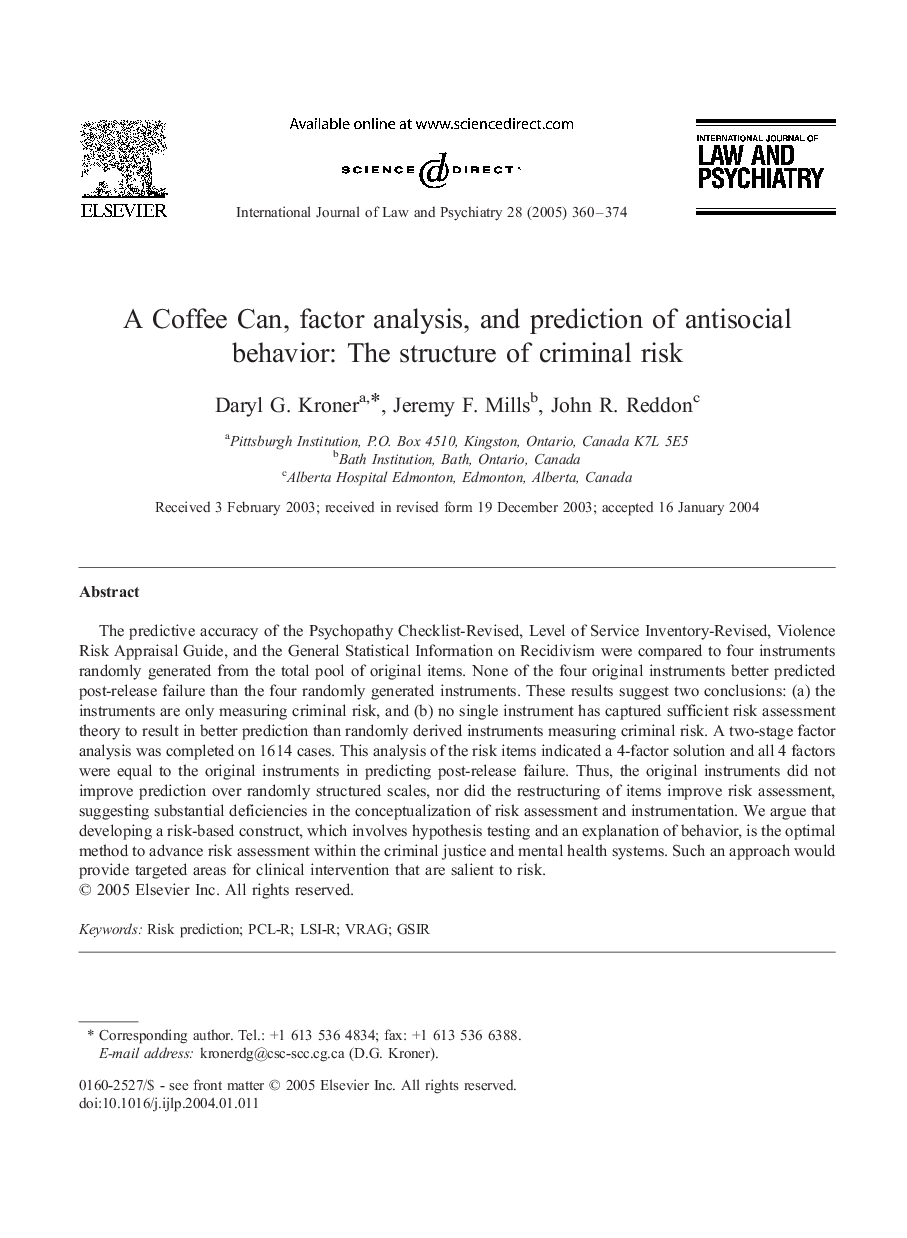| Article ID | Journal | Published Year | Pages | File Type |
|---|---|---|---|---|
| 9623336 | International Journal of Law and Psychiatry | 2005 | 15 Pages |
Abstract
The predictive accuracy of the Psychopathy Checklist-Revised, Level of Service Inventory-Revised, Violence Risk Appraisal Guide, and the General Statistical Information on Recidivism were compared to four instruments randomly generated from the total pool of original items. None of the four original instruments better predicted post-release failure than the four randomly generated instruments. These results suggest two conclusions: (a) the instruments are only measuring criminal risk, and (b) no single instrument has captured sufficient risk assessment theory to result in better prediction than randomly derived instruments measuring criminal risk. A two-stage factor analysis was completed on 1614 cases. This analysis of the risk items indicated a 4-factor solution and all 4 factors were equal to the original instruments in predicting post-release failure. Thus, the original instruments did not improve prediction over randomly structured scales, nor did the restructuring of items improve risk assessment, suggesting substantial deficiencies in the conceptualization of risk assessment and instrumentation. We argue that developing a risk-based construct, which involves hypothesis testing and an explanation of behavior, is the optimal method to advance risk assessment within the criminal justice and mental health systems. Such an approach would provide targeted areas for clinical intervention that are salient to risk.
Keywords
Related Topics
Health Sciences
Medicine and Dentistry
Forensic Medicine
Authors
Daryl G. Kroner, Jeremy F. Mills, John R. Reddon,
